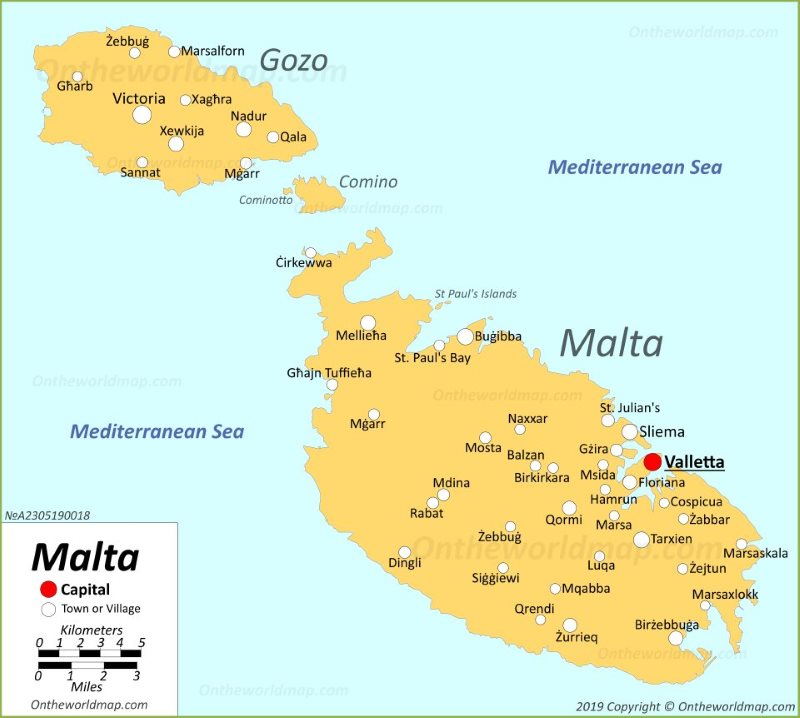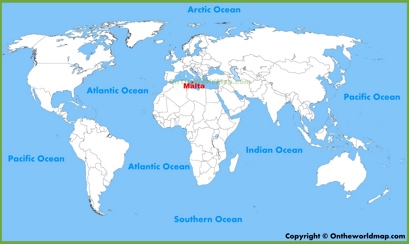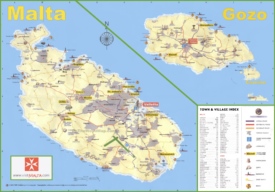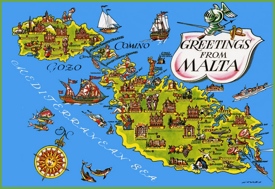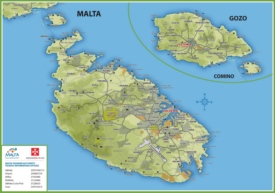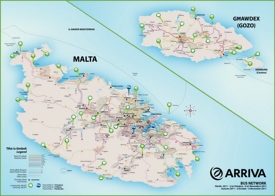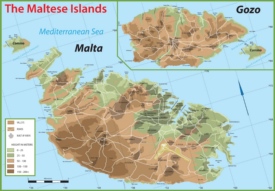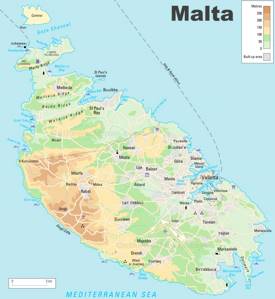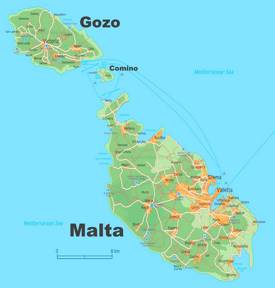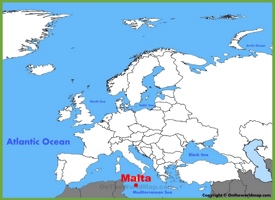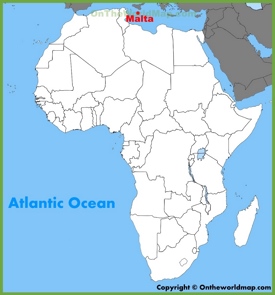Malta Map
Description:
This map shows islands, major cities, towns and villages in Malta.
Size: 1000x898px / 198 Kb | 960x862px / 106 Kb
Author: Ontheworldmap.com
You may download, print or use the above map for educational, personal and non-commercial purposes. Attribution is required. For any website, blog, scientific research or e-book, you must place a hyperlink (to this page) with an attribution next to the image used.
Online Map of Malta
Detailed Maps of Malta
About Malta
Malta is a southern European island nation in the Mediterranean Sea, located south of Italy and north of Libya. The archipelago covers an area of about 122 square miles (316 square kilometers) and consists of three main islands, Malta, Gozo, and Comino. With a population of about 550,000, Malta is among the most densely populated countries in the world.
Valletta, the country's capital, serves as the administrative and commercial center of the state. Known for its historical significance, Valletta includes landmarks such as St. John's Cathedral and the Grandmaster's Palace.

Other important urban areas include Birkirkara, the largest city by population, and Sliema, a major commercial and residential center.
Malta's economy relies on industries such as tourism, financial services and information technology. Tourism plays an important role as tourists are attracted to Malta's historical sites, including megalithic temples and the fortress city of Mdina. The island's Mediterranean climate, characterized by hot summers and mild winters, further enhances its appeal as a tourist destination.
The country has developed a strong financial services sector, aided by its strategic location and membership of the European Union since 2004. Efforts to diversify the economy include investments in digital innovation and infrastructure development.
Malta's strategic location has historically made it a center of trade and cultural exchange in the Mediterranean region. Today, the country continues to capitalize on its location, historical heritage and economic initiatives to maintain its status as a key player in the region.
The Facts:
| Capital: | Valletta |
| Area: | 122 sq mi (316 sq km) |
| Population: | ~ 550,000 |
| Official language: | Maltese, English |
| Currency: | Euro (€) (EUR) |
| Driving side: | left |
| Calling code: | +356 |
| Internet TLD: | .mt |
| Time zone: | UTC+1 (Central European Time) Summer (DST) UTC+2 (Central European Summer Time) |
| Gross domestic product 2024 (PPP): |
|
| Gross domestic product 2024 (nominal): |
|
Geography of Malta
Malta is an archipelago in the central Mediterranean Sea consisting of three main islands: Malta, Gozo and Comino. The country has a total area of about 122 square miles (316 square kilometers), with Malta being the largest island. The topography is mostly low hills with terraced fields and a rugged coastline with numerous harbors and bays.
The archipelago enjoys a Mediterranean climate characterized by hot, dry summers and mild, humid winters. Average temperatures range from 12°C (54°F) in winter to 31°C (88°F) in summer. Rainfall occurs mainly between October and March, with the summer months being particularly dry.
Malta's geographical regions include urbanized coastal areas, especially around Valletta and Sliema, and more rural landscapes on Gozo. The strategic location of the islands has historically facilitated trade and cultural exchange throughout the Mediterranean.
Brief History of Malta
Deeply influenced by its location in the central Mediterranean, Malta's history dates back several millennia. Neolithic inhabitants left behind megalithic temples, some of the world's oldest freestanding structures, dating back to around 3600 BC. The Phoenicians arrived here around 800 BC and established Malta as a crucial trading post, and later Carthaginian and Roman rule incorporated the islands into larger trading networks.
In 1530, control of the island passed to the Knights of St. John, who fortified Malta and left behind an indelible architectural and cultural legacy. They were famous for defending the islands during the Great Siege of 1565 against the Ottoman Empire. French forces under Napoleon briefly occupied Malta in 1798, but British rule began in 1800 and lasted until Malta's independence in 1964. Malta became a republic in 1974.
In the 20th century, Malta played a strategic role during both World Wars due to its location. In 2004, Malta joined the European Union, a milestone in its modern development. The rich history reflects a combination of cultural influences that have shaped Malta's unique identity.
Maps of Malta

